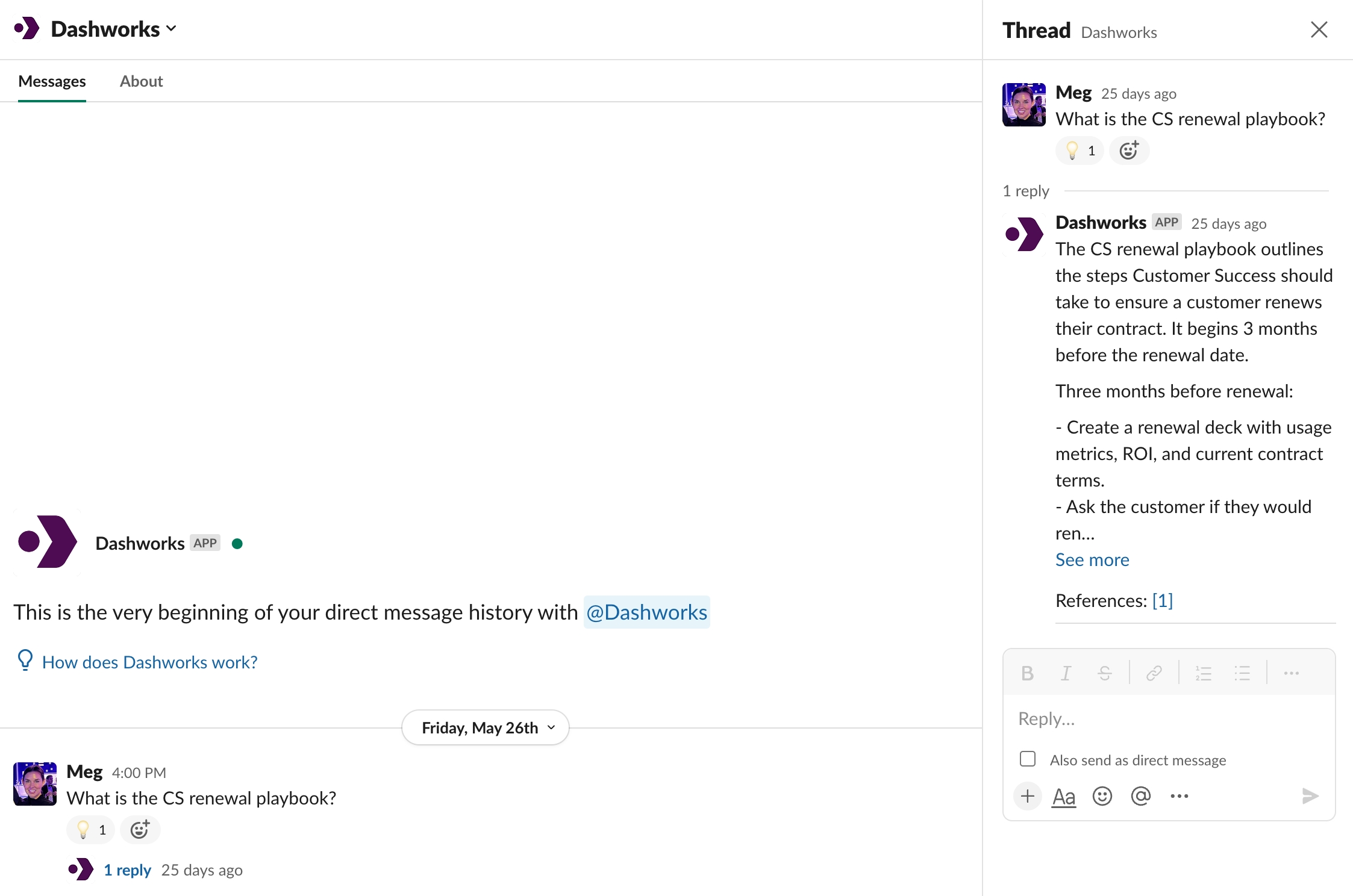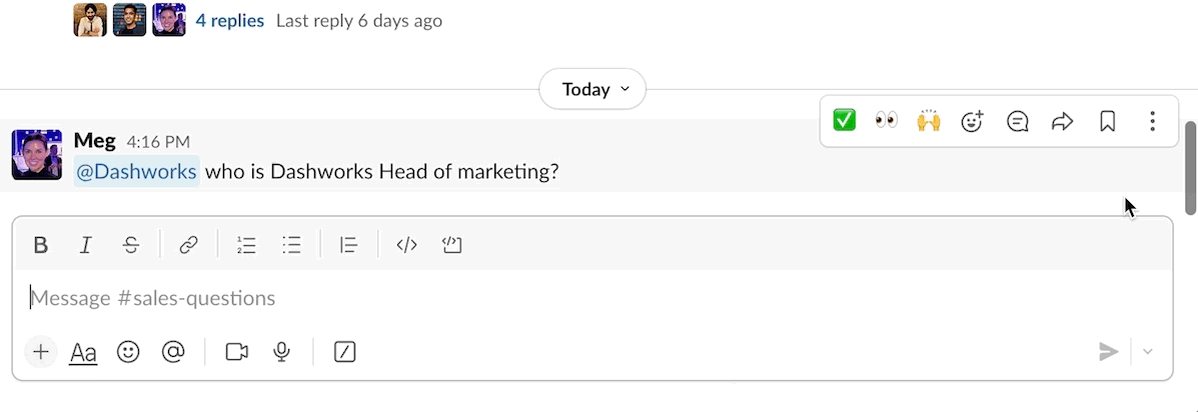Slackbot
As your team grows, the number of Slack channels for employee questions also increases (like #sales-questions, #technical-support, and #ask-product). The volume of weekly questions can be overwhelming for channel managers, leading to long wait times for employees seeking help. The Dashworks Slackbot can automatically address up to 87% of questions asked in Slack. This allows channel managers to concentrate on more important matters, while providing instant answers to unblock the rest of the team.
1. Slackbot in Channels
Once you've set up Bots, you can invite the Dashworks Slackbot to a Slack channel:
Invite the Slackbot "APP" to the channel by typing "/invite @Dashworks." This will allow the Slackbot to respond to questions asked in the channel. Once the Slackbot has been added, the Dashworks Slackbot will automatically detect and respond to questions asked in new threads.
2. Slackbot in DMs
If you have questions that you don't want to ask in a public or shared channel, you can use the Slackbot to send a direct message (DM) instead. This way, you can ask questions privately without sharing them with your team. To access your DMs in Slack, go to the 'Apps' section in your individual Slack instance and find the Dashworks app. You don't need to tag anyone in your message to get a response from the Slackbot. All responses will be private, and you can access all the information you have permission to see in your company's knowledge base. To start a DM, open a direct message with the Slackbot, just like you would with a teammate, and ask any work-related question.

3. Other ways to use the Slackbot
If you prefer not to have Dashworks respond automatically to questions in the channel, you can adjust this setting on the Bots tab. Here are some other ways you can also use Dashworks in channels:
Dashworks can be combined with Slack Workflows for powerful customization, such as structured form inputs, or trigger multiple actions after a question is asked in the channel.
Here are the steps to creating a workflow:
Go to the "Integrations" tab on the channel's top and select "Add a Workflow".
Select "Create Workflow' and then "From a link in Slack".
As the first step in this workflow, select "Forms" -> "Collect info in a form" on the right side. You can customize this form per your requirements. Include a "Long Answer" field with a descriptive name, such as "What is your question?". This field will send the user's question to Dashworks. Mark this step as required.
As the second step, select "Messages" -> "Send a message to a channel". Select the channel where you want to add the Slackbot. Under "Add a message," add "
@user-who-asked-the-question: @dashworks {user question}", replacing [Variable X] with the appropriate variable by clicking "Insert variable".Add any additional actions you want to take, then publish the workflow.
Copy the link to the workflow and add it as a bookmark in the Slack channel.
Users will be directed to the form created in Step 3 when they click on the bookmark. After submitting the form, a new thread will be created with the question, and Dashworks will respond.
You can trigger a response from Dashworks by tagging it with "@Dashworks" in your question.
Last updated
Was this helpful?
